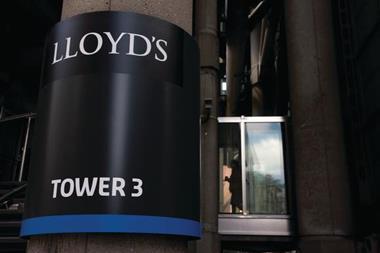Maximum excess will be based on brokers’ income rather than assets
Lloyd’s is changing the way it calculates the maximum amount of excess that registered Lloyd’s brokers can pay under professional indemnity (PI) policies.
Lloyd’s requires its registered brokers to take out PI cover, but restricts the amount of excess they can pay per claim.
Under the new rules, the maximum excess per claim will be based on a broker’s income rather than net tangible assets, bringing the Lloyd’s rules into line with FCA requirements.
The change will be effective immediately for new Lloyd’s brokers. Existing brokers must be compliant with the new rules by 8 January 2015.
The new rules state that the excess brokers pay must be less than 3% of their annual income or £2.5m, whichever is less.
Under the current rules, the excess had to be less than 25% of a broker’s net tangible assets or £2.5m, whichever is lower.
Lloyd’s said it made the change following feedback from the market.
It said there were several situations where a broker would not be able to obtain reasonably priced PI cover even where they are compliant with their regulator’s requirements.
It added that there had also been confusion about how to calculate net tangible assets.
Lloyd’s said in a statement: “Having consulted with London and International Insurers Brokers’ Association and Lloyd’s Market Association, it has been decided that the new excess requirement will be drawn in line with FCA requirements.”
Biba compliance and training manager David Sparkes said the changes will affect firms differently, as a company could have very few assets but a decent sized income.
He added: “It’s a sensible move. It makes life less complicated for brokers who want to take FCA compliant cover out.”



































No comments yet